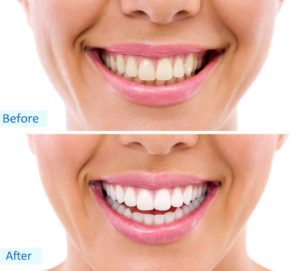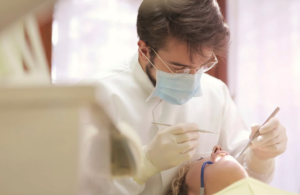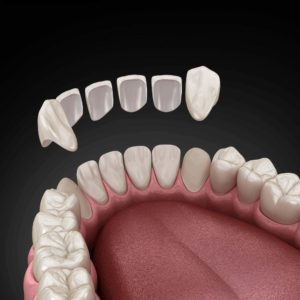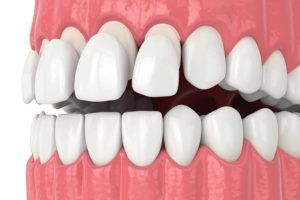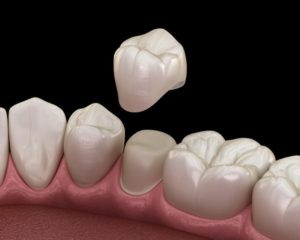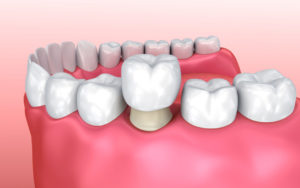An abscess is a pocket of infection that forms when bacteria enter the body and cause swelling, pain, and redness. It can occur anywhere on the body, including your teeth, gums, skin, or internal organs. Whether you have a tooth abscess, a skin abscess, or any other type, it is important to monitor how it heals. In this article, we will discuss how to tell if an abscess is healing, how long it takes to heal, and what you should expect during the healing process.
How Do You Tell if an Abscess Is Healing or Infected?

Once you notice an abscess, it’s important to determine if it’s healing or still infected. Healing will look different than an infection that’s not improving. Here are some signs to help you distinguish between the two:
Signs of Healing:
- Pain Reduction: The pain you feel from the abscess should start to decrease after treatment. As the infection begins to clear up, the throbbing sensation should fade.
- Decreased Swelling: If the abscess was swollen, you’ll notice the swelling slowly shrinking. The skin or gums around the abscess should return to a normal, healthy appearance.
- Abscess Draining: Some abscesses drain on their own, especially if they are near the surface of the skin or gums. If the drainage decreases over time, it is a good sign that the infection is healing.
- No More Pus: If the abscess was releasing pus, you should see that it stops draining as the abscess heals. If it does continue to drain, the pus should become less thick and yellow, a sign that the infection is resolving.
- Normal Color of Skin or Gums: The redness around the abscess should start to fade. Healthy skin or gums will return to their usual color once the infection is under control.
Signs of Infection:
- Increased Pain: If the pain becomes worse, or if the throbbing continues without relief, the abscess may still be infected. An untreated abscess can continue to cause pain until proper treatment is received.
- Spreading Redness: Redness that spreads beyond the area of the abscess is a warning sign. This can mean that the infection is spreading and needs immediate medical attention.
- Continued Swelling: If the swelling doesn’t go down or keeps growing, the infection could still be active.
- Persistent Fever: A fever that does not go away may indicate that the infection is not healing and could be spreading throughout your body.
- Foul-Smelling Discharge: If the drainage from the abscess starts to smell bad, or if it turns dark or green, it could mean that the infection is still present.
If you notice any of these signs, it’s important to contact a healthcare provider right away. An untreated or worsening infection can lead to more serious complications.
How Do You Know If an Abscess Is Going Away?
It can sometimes be hard to tell if an abscess is healing, especially in the early stages. However, there are a few key things to watch for that will help you know if it’s going away:
Signs the Abscess is Going Away:
- Decrease in Pain: As the infection resolves, pain from the abscess should decrease. The throbbing sensation will usually lessen, and discomfort should start to fade.
- Drainage Stops: If the abscess drains pus or fluid, the drainage should stop as the infection heals. If the abscess was very large, it may take longer for the pus to stop, but it should gradually lessen.
- Less Swelling: Swelling around the abscess will reduce over time as the infection goes away. The area around the abscess should return to its normal shape and size.
- Normal Tissue Appearance: The tissue around the abscess, whether it’s skin or gum, will return to its normal color. The redness should disappear, and the tissue should look healthy.
Keep in mind that even if the abscess seems to be getting better, it’s important to complete any prescribed treatment and follow up with your doctor or dentist to ensure the infection is completely healed.
How Long Does It Take for an Abscess to Heal?

The time it takes for an abscess to heal depends on the type of abscess, its size, and the treatment you receive. Here are some general time frames for different kinds of abscesses:
Tooth Abscesses:
- With Treatment: After treatment, such as a root canal or extraction, a tooth abscess typically heals within a few days to a couple of weeks. However, if the abscess is severe, it may take longer to heal fully.
- Without Treatment: If left untreated, a tooth abscess can last weeks or even months, but the infection can spread to other parts of the body. It is important to get it treated as soon as possible.
Skin Abscesses:
- With Drainage: If the abscess is drained by a doctor, the healing time can be anywhere from a few days to one week. If the infection is mild, you may experience complete healing within a few days.
- Without Drainage: If a skin abscess is not drained, it may take longer to heal. In some cases, the abscess might stay for weeks without proper treatment.
Internal Abscesses:
- With Medical Treatment: Internal abscesses, such as those caused by appendicitis or infections in internal organs, may require surgery or antibiotics. Healing may take weeks to months, depending on the severity of the abscess and the treatment needed.
Can an Abscess Heal Without Bursting?
Not all abscesses burst. While some abscesses naturally open and drain on their own, others can heal without bursting. In fact, it’s often better for the abscess not to burst, as this can reduce the risk of the infection spreading.
How Abscesses Heal Without Bursting:
- Drainage via Medical Treatment: A doctor or dentist can drain an abscess with a needle or incision, allowing it to heal properly without bursting. This is often a safer and cleaner way to handle an abscess.
- Abscess Absorption: Sometimes, the body will absorb the infection over time without the abscess breaking open. This can happen if the abscess is small and the body’s immune system can fight the infection successfully.
If you’re concerned that an abscess might burst on its own, you should see a healthcare provider immediately. Burst abscesses can lead to serious complications, such as spreading the infection to other areas of the body.
Does Abscess Draining Mean It’s Healing?
When an abscess drains, it is a sign that the infection is being cleared out. However, drainage does not always mean that the abscess is fully healed. It is an important part of the healing process, but it may require additional treatment or care to fully heal.
What Drainage Means:
- Clearing Out Infection: When an abscess drains, it releases pus, which is made up of dead tissue, bacteria, and white blood cells. The drainage helps remove the infection and can relieve pressure and pain.
- Temporary Relief: Draining an abscess can provide temporary relief, but it does not always resolve the underlying infection. It is important to seek follow-up care to ensure that the infection is fully gone and that the abscess doesn’t return.
What to Expect After Drainage:
- Ongoing Treatment: After the abscess drains, you may still need to take antibiotics or undergo further procedures to ensure the infection is completely healed.
- Wound Care: The area where the abscess drained may need to be cleaned and dressed to prevent further infection.
Even though drainage is a positive sign, it’s essential to follow the advice of your healthcare provider to make sure the abscess heals completely.
Conclusion
Abscesses can be painful and concerning, but with the right care, they can heal. To know if an abscess is healing, watch for signs such as decreased pain, reduced swelling, and less drainage. Healing typically takes anywhere from a few days to a few weeks, depending on the type and severity of the abscess. While an abscess can sometimes heal without bursting, proper medical treatment is often necessary to ensure that the infection is fully cleared. If you notice any signs of a worsening infection, such as increased pain, spreading redness, or fever, contact your healthcare provider for further treatment.
By following your doctor’s advice and seeking care when needed, you can help your body heal and prevent complications from an abscess.





